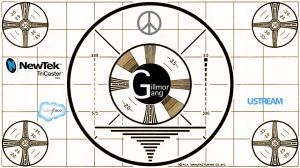In a discussion about culture versus history on this edition of the Gang, Denis Pombriant invokes the Beatles as examples of agents of change that used rock and roll to alter the arc of history. “Just understand that four kids from Liverpool changed the entire culture of the world. Not immediately, but over time.” With the release of almost 8 hours of footage documented the beginning of the group’s last year of existence, those of us who revere the output and impact that ended some 50 years ago have perhaps now reached our limit. As I endured the 3-part saga each night of the Thanksgiving holiday weekend, I kept thinking that enough was finally enough.
Maybe Jack Dorsey thought the same thing as he quit his CEO job at Twitter. Conventional wisdom says he either was asked to leave by a board larded with corporate raiders and unhappy investors, or just plain was done. I think he did a pretty good job with a social network invented by him and loved by its embedded fans. Recent social software like newsletters and Clubhouse clones has brought the company to an interesting place in the road where it can serve the role of a postwar Hollywood studio managing the transition to a new era of subscription media.
Saturday morning I’m some two hours away from the end of the Beatles’ Get Back, and it’s been much more than I’d imagined. For days I’ve been joking that this is finally the end of the story, but it’s nothing like that. The thing that was created may be over, but the group is really just now forming its place in the history of the world. Each day grows closer to the moment when Lennon hopes they’ve passed the audition, but we already know the answer from the earliest moments. Yes it is, it’s true.
Harrison is the deepest into the essence of what they’ve created, with his anger fueling the project. The three song writers are done listening to each other on a pragmatic level, struggling with their fame but not willing to give any of it up just yet. Harrison and Ringo decrypt Octopus’s Garden, but the kernel in the scene is George’s command of the full Beatle envelope. As he sketches out the chord structure of Ringo’s tune, he foreshadows the second part of the project, the Abbey Road return to Beatle studio magic. As each chord resonates, the shimmer of the Beatle process appears, glows, and then is replaced by the next chord and process.
Lennon and McCartney exist more in relation to each other, each somewhat frozen in fatigue from grappling with the other. Harrison is more than willing to blow things up, but his ongoing narrative commentary is both accurate and positive in its optimism. He’s been living in this fishbowl long enough to know he is the only one of the group to prod it forward. When he injects Billy Preston into the sessions, everyone else can see what is obvious to Harrison. When McCartney runs down Let It Be, Preston disappears into the mix. Lennon thirsts for the live feel Preston summons, but McCartney won’t surrender his apparent control of the project by endorsing a new group member.
A different hierarchy emerges in the film: Without Lennon (asleep or anesthetized at home) the three default to McCartney but function only when Harrison is engaged. When McCartney senses the Frankenstein he’s enabled in Harrison, he retreats to the relative safety of Lennon’s call-and-response wit. Ringo’s eyes widen as he waits for his opening, a coiled cheshire cat. Harrison lays trap after trap for those who appear unobservant only to comment later on what was going down. George Martin is a third straight project deep into unraveling this slow motion meltdown, but appears surprisingly ineffective at adding punch to the rope-a-dope circulating in the room. Watch Harrison’s eyes as he glancingly acknowledges the camera for only the frames necessary to raise a smile. He is the director, screenwriter, and auteur of this thing.
Several remaining questions: what went on the day the group forbade the cameras at Saville Row? Before the pause and palpably after, the music tightens up as the band does some of its magic to the material. Harrison’s Get Back lead guitar switches places with Lennon’s rhythm guitar. The presumed wisdom is that the Quiet Beatle is laying out post-quitting the Twickenham sessions, but the results suggest otherwise. McCartney’s chops on the roof are transformational on all the tracks, a sign of the songs having locked into a pocket to be mined in the studio a few weeks later on Abbey Road tracks I Want You (She’s So Heavy), Something, and Come Together.
Don’t believe the conventional wisdom. Now that we’ve all been in the room, who’s kidding who? Not McCartney, who talked divorce well before the project ran aground in the drafty Twickenham studio. Not Lennon, who months earlier knew the group was in trouble when their manager died. The Magical Mystery Tour debacle should have convinced them they couldn’t just wing a TV show, but they tried it again anyway. George Martin wasn’t their producer; he was their mentor. Ringo actually married a Bond girl. They spoke a secret language to each other. There was no Fifth Beatle.
the latest Gillmor Gang Newsletter
__________________
The Gillmor Gang — Frank Radice, Michael Markman, Keith Teare, Denis Pombriant, Brent Leary and Steve Gillmor. Recorded live Friday, November 19, 2021.
Produced and directed by Tina Chase Gillmor @tinagillmor
@fradice, @mickeleh, @denispombriant, @kteare, @brentleary, @stevegillmor, @gillmorgang
Subscribe to the new Gillmor Gang Newsletter and join the backchannel here on Telegram.
The Gillmor Gang on Facebook … and here’s our sister show G3 on Facebook.


